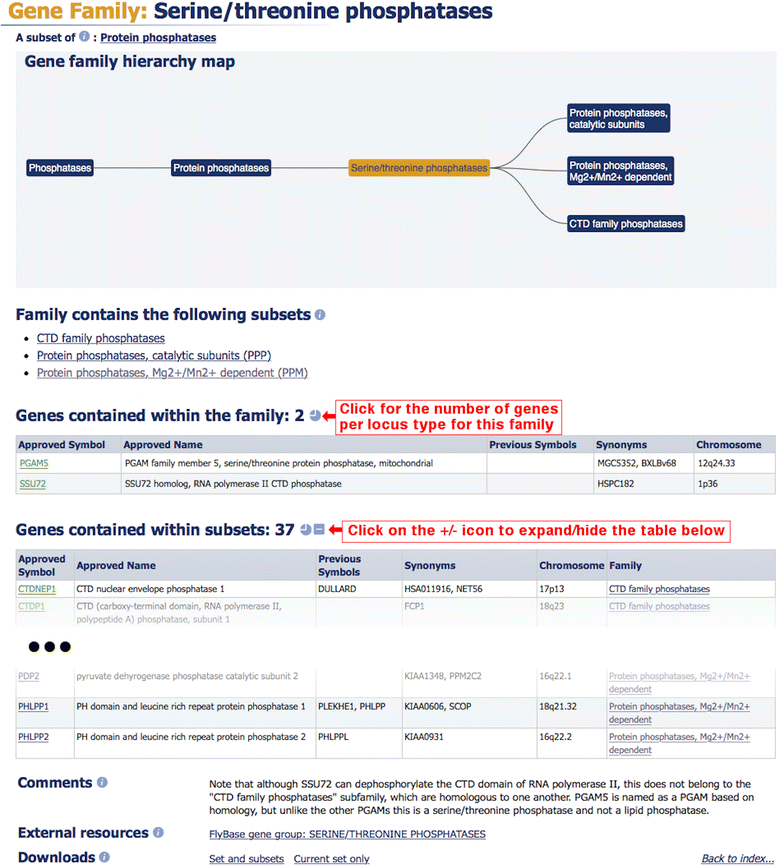A review of the new HGNC gene family resource
- PMID: 26842383
- PMCID: PMC4739092
- DOI: 10.1186/s40246-016-0062-6
A review of the new HGNC gene family resource
Abstract
The HUGO Gene Nomenclature Committee (HGNC) approves unique gene symbols and names for human loci. As well as naming genomic loci, we manually curate genes into family sets based on shared characteristics such as function, homology or phenotype. Each HGNC gene family has its own dedicated gene family report on our website, www.genenames.org . We have recently redesigned these reports to support the visualisation and browsing of complex relationships between families and to provide extra curated information such as family descriptions, protein domain graphics and gene family aliases. Here, we review how our gene families are curated and explain how to view, search and download the gene family data.
Figures




References
Publication types
MeSH terms
Substances
Grants and funding
LinkOut - more resources
Full Text Sources
Other Literature Sources
Research Materials

